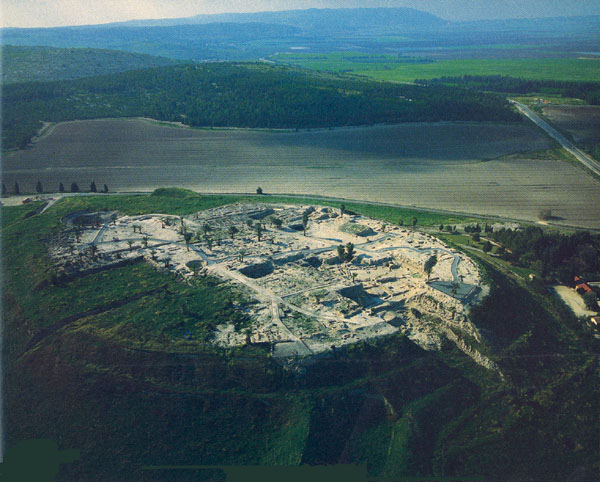Image Details

Richard Nowitz
Strategically located on one of antiquity’s foremost trade and military routes, the 70-foot-high mound of Megiddo (shown from the southeast) overlooks a plain that has run with the blood of soldiers who have fought for nations and empires as diverse as ancient Egypt and 20th-century Great Britain. The Egyptian pharaoh Thutmose III fought the first battle in recorded history at Megiddo in 1479 B.C., and the Jezreel Valley (at the heart of which Megiddo stands) has been a contested battleground ever since. King Saul and King Josiah both met their end in the Jezreel Valley (1 Samuel 31; 2 Kings 23), as did Israel’s enemy, the Canaanite general Sisera (Judges 4).
Since John would have been familiar with this long history of conflict, it is appropriate that he chose Megiddo as the site for a climactic battle between the Messiah and the assembled nations of the earth.
